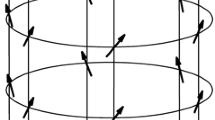Abstract
Chloroflexus aurantiacus was grown phototrophically in the presence of 60 µg of 2-hydroxybiphenyl (HBP) per ml, which inhibited the formation of colored carotenoids up to about 90%, while bacteriochlorophyll (BChl) c formation and phototrophic growth were not significantly influenced. When the HBP concentration was increased, the latter two processes became inhibited, yet, no further inhibition of carotenoid formation was possible. The typical shape of chlorosomes was not affected after growth in the presence of 60 µg of HBP per ml. However, the chlorosome dimensions were slightly decreased. Chlorosome preparations from carotenoid-deficient cultures lacked significant amounts of colored carotenoids and exhibited lower buoyant densities than chlorosomes from uninhibited control cultures. As compared on a BChl c basis, the relative contents of the two larger chlorosomal polypeptides of 10.8 and 15.5 kDa (apparent Mr= 11000 and 18000) were not affected by HBP, while formation of the 5.7 kDa (Mr= 3700) polypeptide was inhibited by 50%. The data suggest that, in C. aurantiacus, colored carotenoids are largely dispensable for phototrophic growth and chlorosome formation. Moreover, chlorosome formation and BChl c incorporation into chlorosomes in the absence of about half of the regular amount of the 5.7 kDa polypeptide excludes a constant relationship between these parameters.
Similar content being viewed by others
References
Armstrong GA and Hearst JE (1996) Genetics and molecular biology of carotenoid pigment biosynthesis. FASEB J 10: 228-237
Beyer P and Kleinig H (1992) Analysis of the formation of carotene chromophore and ionone rings in Narcissus pseudonarcissusL. chromoplast membranes. In: Packer L (ed) Methods in Enzymology, Carotenoids, Vol 213, Part A, Chemistry, Separation, Quantitation and Antioxidation, pp 62-74. Academic Press, Hartcourt Brace Jovanovich Publishers, San Diego, CA
Beyer P, Falk H and Kleinig H (1983) Particulate fractions from Chloroflexus aurantiacusand distribution of lipids and polyprenoid forming activities. Arch Microbiol 134: 60-63
Blankenship RC, Olson JM and Miller M (1995) Antenna complexes from green photosynthetic bacteria. In: Blankenship RE, Madigan TM and Bauer CE (eds) Anoxygenic Photosynthetic Bacteria, pp 399-435. Kluwer Academic Publishers, Dordrecht, the Netherlands
Castenholz RW (1969) Thermophilic blue-green algae and the thermal environment. Bacteriol Rev 33: 476-504
Drews G and Golecki JR (1995) Structure, molecular organization, and biosynthesis of membranes of purple bacteria. In: Blankenship RE, Madigan TM and Bauer CE (eds) Anoxygenic Photosynthetic Bacteria, pp 231-257. Kluwer Academic Publishers, Dordrecht, the Netherlands
Feick RG, Fitzpatrick M and Fuller RC (1982) Isolation and characterization of cytoplasmic membranes and chlorosomes from the green bacterium Chloroflexus aurantiacus. J Bacteriol 150: 905-915
Foidl M, Golecki JR and Oelze J (1994) Bacteriochlorophyll cformation and chlorosome development in Chloroflexus aurantiacus. Photosynth Res 41: 145-150
Foidl M, Golecki JR and Oelze J (1998) Chlorosome development in Chloroflexus aurantiacus. Photosynth Res (in press)
Golecki JR and Oelze J (1987) Quantitative relationship between bacteriochlorophyll content, cytoplasmic membrane structure and chlorosome size in Chloroflexus aurantiacus. Arch Microbiol 148: 236-241
Halfen LN, Pierson BK and Francis GW (1972) Carotenoids of a gliding organism containing bacteriochlorophylls. Arch Mikrobiol 82: 240-246
Holo H, Broch-Due M and Ormerod JG (1985) Glycolipids and the structure of chlorosomes in green bacteria. Arch Microbiol 143: 94-99
Kleinig H (1974) Inhibition of carotenoid synthesis in Myxococcus fulvus(Myxobacterales). Arch Microbiol 97: 217-226
Madigan MT, Petersen SR and Brock TD (1974) Nutritional studies on Chloroflexus, a filamentous photosynthetic, gliding bacterium. Arch Microbiol 100: 97-103
Maudinas B, Herbert R, Villoutreix J and Granger P (1972) Influence du 2-hydroxybiphenyl sur la carotinogenese de Rhodopseudomonas spheroideset de Rhodospirillum rubrum. Biochemie 54: 1085-1088
Nievelstein V, Vandekerckhove J, Tadros MH, von Lintig J, Nitschke W and Beyer P (1995) Carotene desaturation is linked to a respiratory redox pathway in Narcissus pseudonarcissuschromoplast membranes. Involvement of a 23-kDa oxygen-evolving-complex-like protein. Eur J Biochem 233: 864-872
Norris SR, Barrette TR and DellaPenna D (1995) Genetic dissection of carotenoid synthesis in Arabidopsisdefines plastoquinone as an essential component of phytoene desaturation. The Plant Cell 7: 2139-2149
Oelze J (1992) Light and oxygen regulation of the synthesis of bacteriochlorophylls aand cin Chloroflexus aurantiacus. J Bacteriol 174: 5021-5026
Oelze J and Golecki JR (1995) Membranes and chlorosomes of green bacteria: structure, composition and development. In: Blankenship RE, Madigan TM and Bauer CE (eds) Anoxygenic Photosynthetic Bacteria, pp 259-278. Kluwer Academic Publishers, Dordrecht, the Netherlands
Oelze J and Kamen MD (1975) Separation of respiratory reactions in Rhodospirillum rubrum: Inhibition studies with 2-hydroxydiphenyl. Biochim Biophys Acta 387: 1-11
Schägger H and von Jagow G (1987) Tricine-sodium dodecyl sulfate-polyacrylamide gel electrophoresis for the separation of proteins in the range from 1 to 100 kDa. Anal Biochem 166: 368-379
Schmidt K (1980) A comparative study on the composition of chlorosomes (chlorobium vesicles) and cytoplasmic membranes from Chloroflexus aurantiacusstrain Ok-70-fl and Chlorobium limicolaf thiosulfatophilumstrain 6230. Arch Microbiol 124: 21-31
Tsuji K, Takaichi S, Matsuura K and Shimada K (1995) Specificity of carotenoids in chlorosomes of the green filamentous bacterium, Chloroflexus aurantiacus. In: Mathis P (ed) Photosynthesis: From Light to Biosphere, Vol IV, pp 99-102. Kluwer Academic Publishers, Dordrecht, the Netherlands
Wullink W, Knudsen J, Olson JM, Redlinger TE and van Bruggen EFJ (1991) Localization of polypeptides in isolated chlorosomes from green phototrophic bacteria by immuno-gold labeling electron microscopy. Biochim Biophys Acta 1060: 97-105
Rights and permissions
About this article
Cite this article
Foidl, M., Golecki, J.R. & Oelze, J. Phototrophic growth and chlorosome formation in Chloroflexus aurantiacus under conditions of carotenoid deficiency. Photosynthesis Research 54, 219–226 (1997). https://doi.org/10.1023/A:1005985117743
Issue Date:
DOI: https://doi.org/10.1023/A:1005985117743




